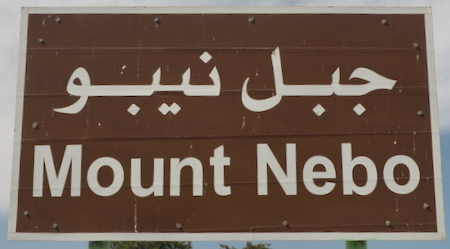
|
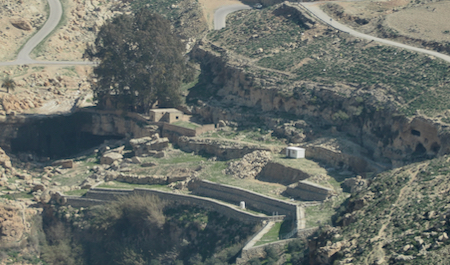
Moses' Spring - one of the two places Moses is believed to have obtained water by striking a rock.
|

Places you can see on a clear day from the top of Mount Nebo
|
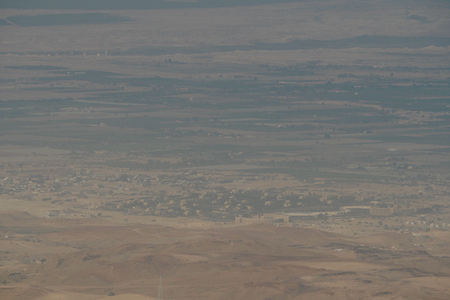
From the top of Mount Nebo - not such a clear day |
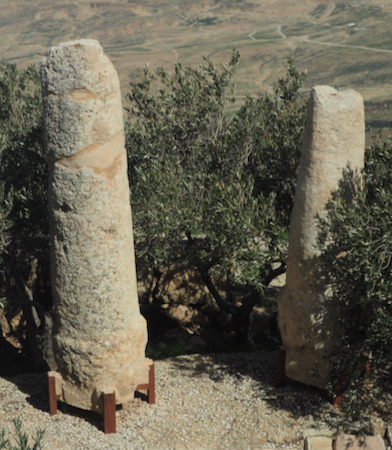
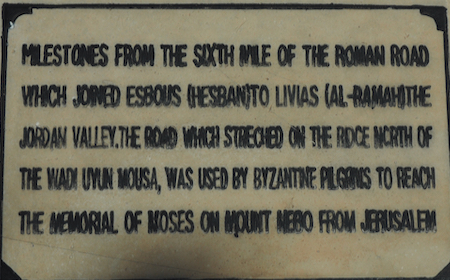
|
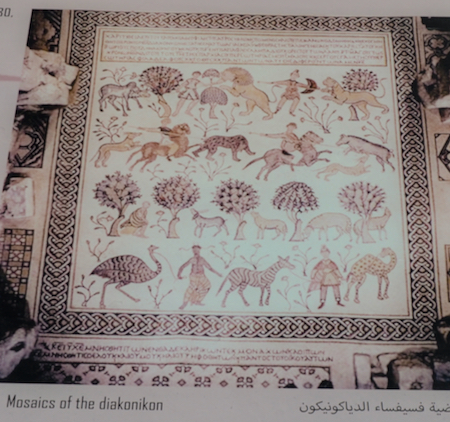
Mosiacs of the Diabonikon |
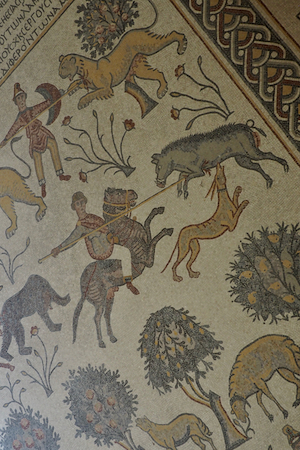
Mosaic details
|
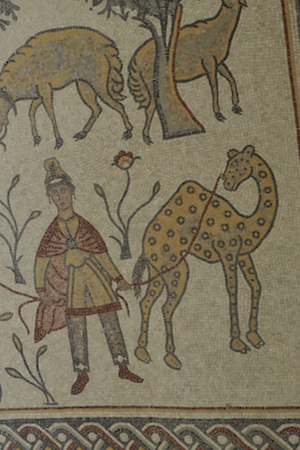
Mosaic details
|
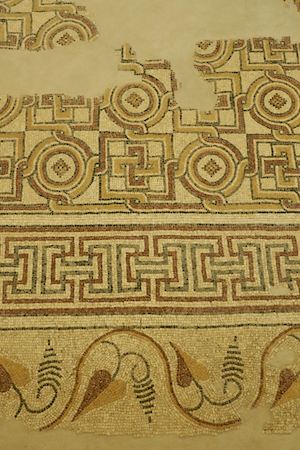
Mosaic details
|
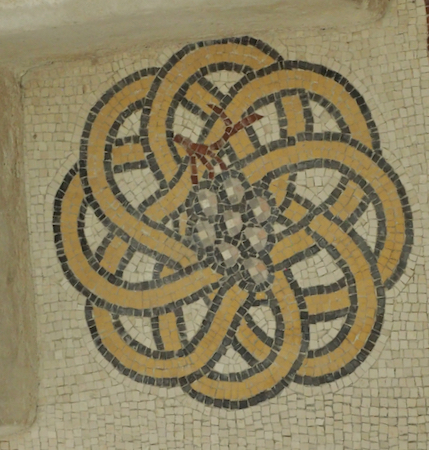
Mosaic details
|
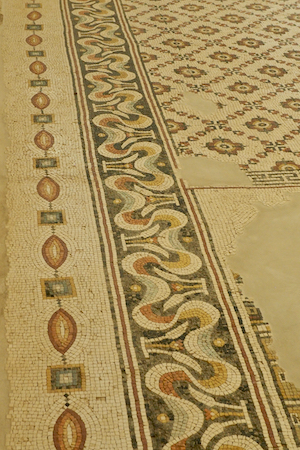
Mosaic details
|
The day's second stop was at a mosaic factory operated by the Queen Noor Foundation as a Community Development Institute. At the Institute women and handicapped people are taught and employed to make beautiful, intricate mosaics to hang or as tables, etc. The store was an art gallery of wonderful work.
A design is drawn on cloth; mosaic pieces are put in place using just flour and water paste; the pieces stick to the cloth so it can be turned upside down; a frame is built around the tiles; water dissolves the paste so the cloth can be removed; cement is poured over the exposed tile pieces; it sets up in two days; when flipped right side up it is a smooth mosaic piece.
We admired the mosaics, painted ostrich eggs, and intricate carpets as well as souvenirs made in China.
|
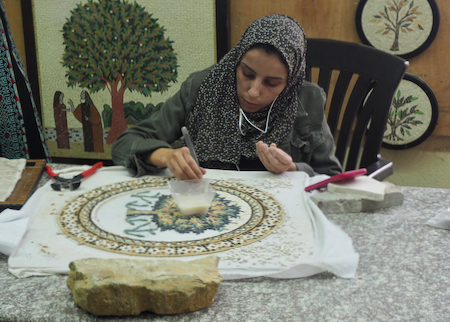
At the Mosaic Factory operated by the Queen Noor Foundation
|
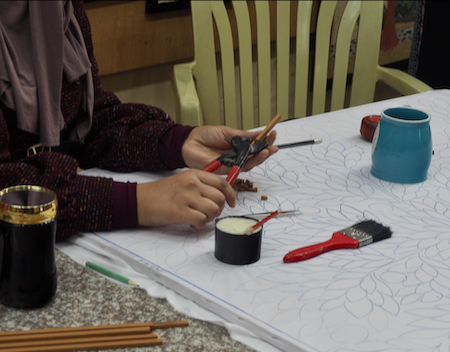
At the Mosaic Factory operated by the Queen Noor Foundation
|
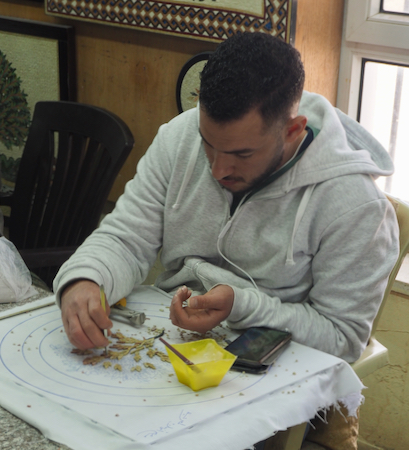
At the Mosaic Factory operated by the Queen Noor Foundation
|
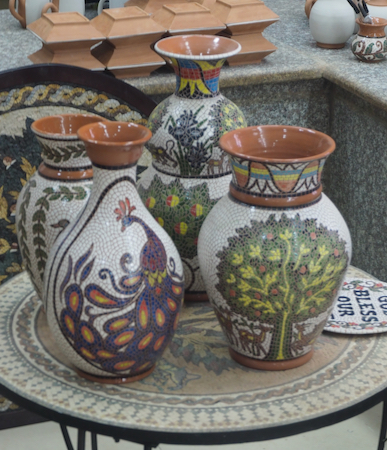
At the Mosaic Factory operated by the Queen Noor Foundation
|
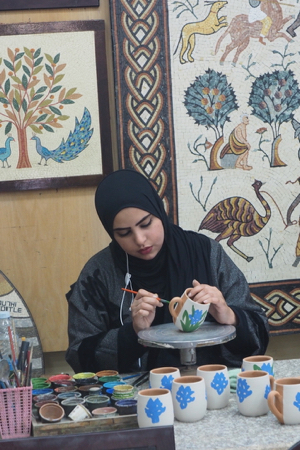
At the Mosaic Factory operated by the Queen Noor Foundation
|
Leaving the Community Development Institute, our bus drove on to the city of Madaba, a city of 100 churches. There, we first entered St. George's Orthodox Church which contains an ancient map of the Holy Land done in mosaics on the sanctuary floor. The mosaic has 3 million tiles and took 2 years to complete. It shows the River Jordan, the Dead Sea down to Egypt, and the Nile River. Intricate and impressive. |
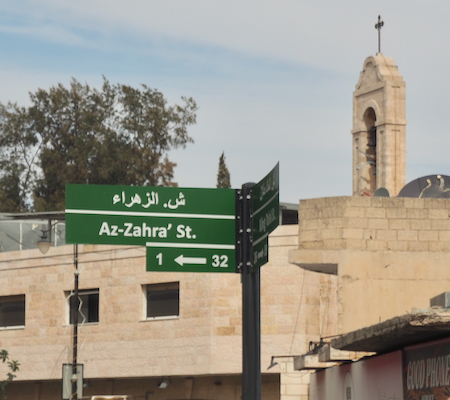
Street sign |
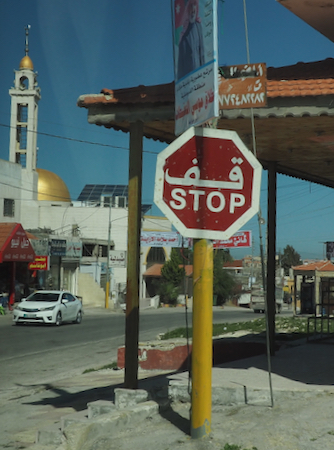
Stop in Arabic
|
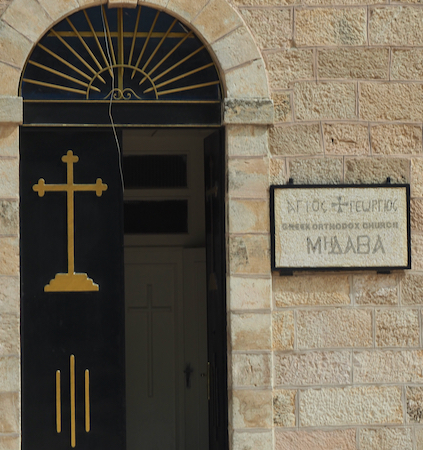
St. George's Greek Orthodox Church
|
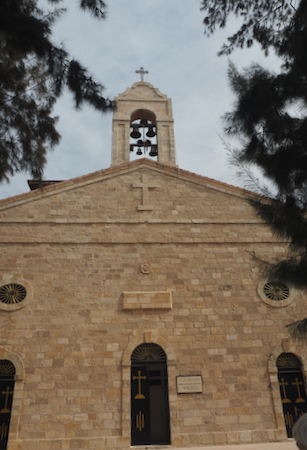
St. George's Greek Orthodox Church
|

St. George's Greek Orthodox Church
|
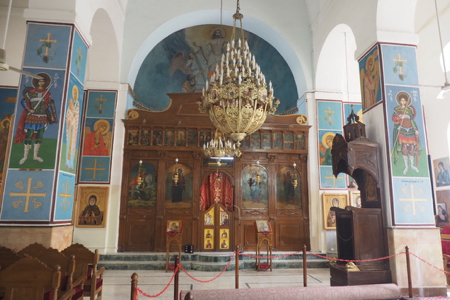
St. George's Greek Orthodox Church
|
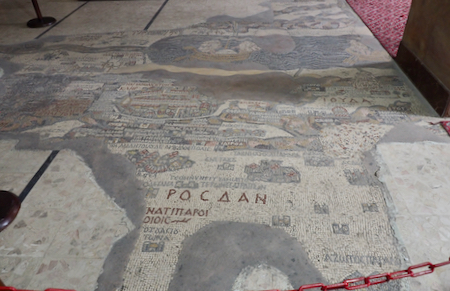
Mosaics in St. George's Greek Orthodox Church
|
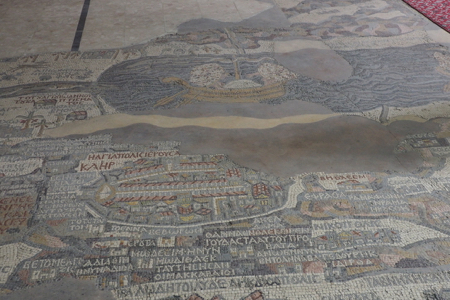
Mosaics in St. George's Greek Orthodox Church
|
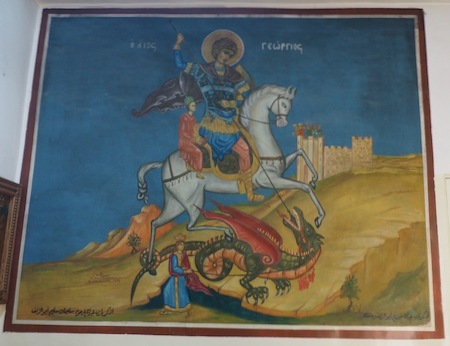
St. George slaying the dragon
|
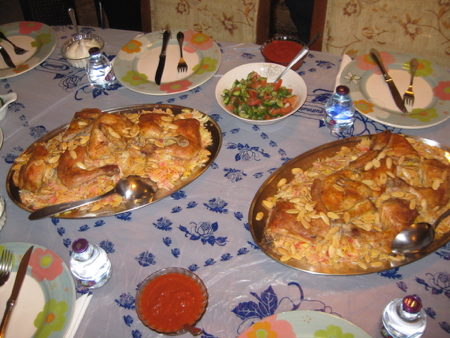
Lunch in Madaba - starters and chicken and French fries with a local dessert
|
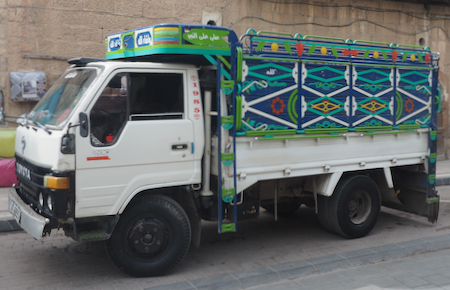
Decorated truck
|
After lunch, we continued on to Petra leaving the King’s Highway and driving on the Desert Highway (Rte. 15), a six lane highway from Amman to the Gulf of Aqaba and Saudi Arabia.
There were many large trucks on the road. The land changes from rock strewn soil to desert, hard packed sand, and few living plants or animals. This is an area of open mines for phosphates. We saw some tents of the local Bedouin tribes.
A short detour took us to a viewpoint to look at the ruins of a 12th century Crusader fort, Mont Real, also known as Shobak Castle. The castle was located along key trading routes and was able to control the main road from Egypt to Syria. Khaled said that in the time of the Crusaders, all the land around the fort was dense forest. It is hard to imagine now. |
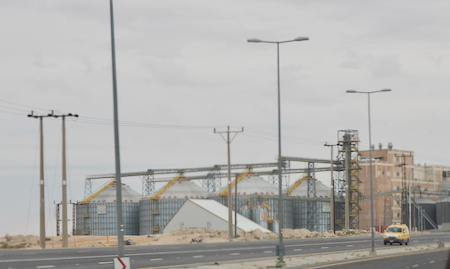
Grain elevators
|
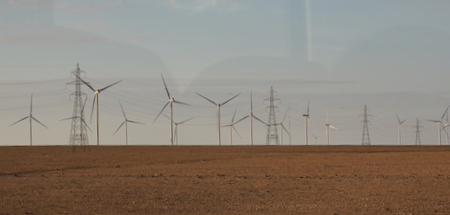
Wind farm |

Mont Real, also known as Shobak Castle
|
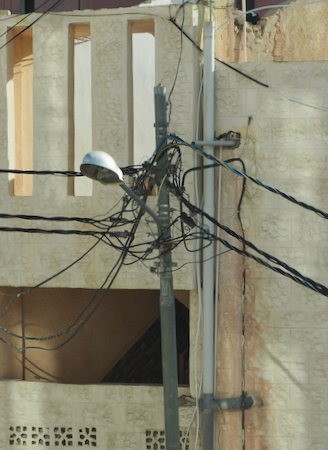
Fine electrical work
|
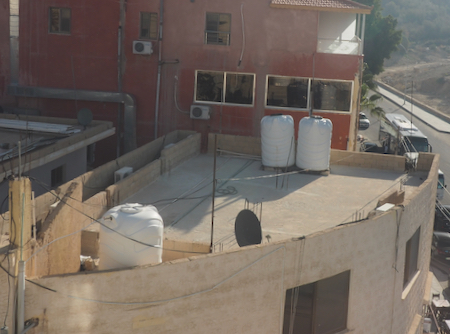
Cisterns on a house/apartment roof
Water is a real problem. Sometimes it is weeks and more between times when water is available. When water is provided, it is stored in these cisterns kept on the roofs of buildings.
|
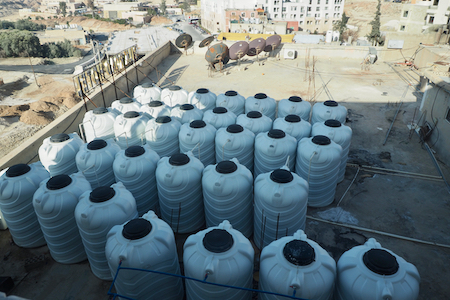
Cistern on top of a hotel |
On arrival at Petra, the first order of business was another PCR COVID test - necessary to enter Egypt in two days time. The test cost us each $30 US because we are still unable to get Jordanian money out of an ATM machine.
Dinner was at the hotel. More starters, a meat dish (lamb), some puff things, and dessert. This was the first lamb we have been served.
The group went to “Walk Petra at Night.” Candlelight (luminaries) light the path to the Treasury. We opted for rest and laundry in the hotel.

































